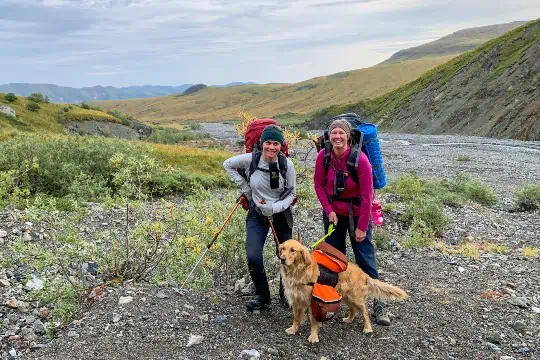I Iive about a 15-minute drive from Stony Creek.
Stony is well known for the best drinking water ever and, of course, for the raspberries that people from all over come to pick. There are always enough, no matter how many pickers – bears, gophers, chipmunks and humans.
The raspberry season in the big gravel pit is at an end now, but already in August I was going up the dirt road on the east side to pick the blueberries that also grow on Squash Mountain.
Later the cranberries will be ripe there, although they looked kind of smallish up there this year. They are big and plentiful right around my house, so I don’t have to go that far for them this year.
Getting to Squash Mountain is a two-hour hike, minimum. It can take much longer if you take in all the sights at leisure.
First there are the grassy slopes, full of roses and flax, purples and yellows in the spring and summer.
Then you come to the steep bank of the creek and look over the edge. I lie on my belly, because the bank is vertical and always crumbling. You can hear the rushing water below. At places you can even see the creek and, when you look for it, the little gold mine.
The owner of the mine lives in a trailer. I don’t know him very well, but he has built a mineshaft in the bank, and somewhere along the trail there is his dredge.
This trail is also used as a trapline. I don’t know how active it all is, but I love to see signs of low-impact use of the land, and people who take care of the land while they work it.
Let’s continue. The path winds from the bank into the forest. If you have hiked this trail, too, you probably know the totem.
Eventually you come to a lovely viewpoint. Looking into the Takhini River valley, you can see the bows of the river glistening. In the far distance, on a clear day, you can catch a glimpse of Kusawa Lake.
Here the blueberries start appearing. And now the trail gets more rocky and for a while it goes through a beautiful stretch that I call parkland.
The conifers stand separate, each coming to full glory, and the occasional bleached, dead tree is awesome.
And then there is the end of the trail, facing Squash Mountain (“squash” meaning you can’t set your foot anyplace without squashing berries). There is some sort of trail that continues, which will take you to little lakes and the higher Stony Creek Range mountains. This summer I hiked up there among the sheep.
At the end of June this year, the mountain was full of flowers, among them species that I do not always see elsewhere, the little lila phlox, for example. Look for it at the flat gravel opening, right by the end of the trail. It is gorgeous.
Oh, yes. Hikes and Bikes will also tell you to make sure you remember where the trail ends if you venture any further. I have had to search for that point myself on several occasions. You don’t want to miss it, or you’re in for a long bushwhack.
The fastest way down from Squash Mountain is actually by bicycle.
In past years, I have pushed my mountain bike up this trail, often accompanied by my son, Alexander Chisholme.
He would be down in 19 minutes and I in 26. Or was it he in 16 minutes and I in 29?
Whatever, it’s a rush!




